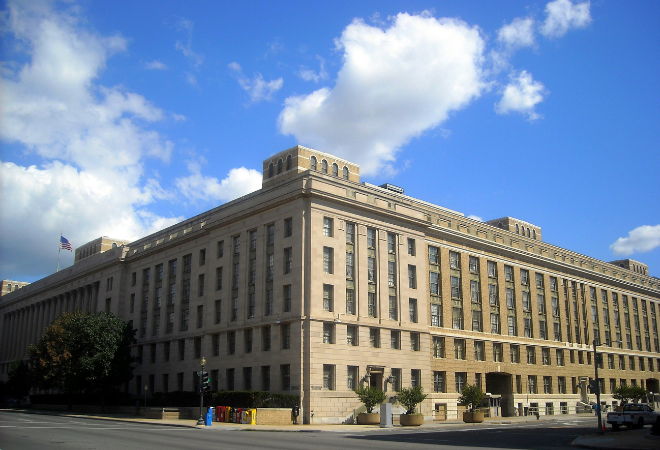
What election results could mean for potato industry
We knew heading into 2020 that the presidential election would be one of the biggest stories of the year. It was, but the COVID-19 pandemic and all of its effects knocked the election down to a distant second.
Joe Biden’s win not only means an administration change, but a change to the opposing party and different viewpoints and priorities on policymaking. As the calendar is about to flip to 2021, we thought it was a good time to talk to National Potato Council CEO Kam Quarles, who is based in Washington, D.C., on the election results and what they could mean for the potato industry.
We’re headed for an administration change in the White House. How does that change the focus of the National Potato Council?

Quarles: Even though every election is unique, one of the traits that they all have is that they involve a lot of change for us. … What I equate it to is that you’re sitting there playing poker and every election deals you a new hand of cards. It doesn’t mean that you have no options when an election rolls out, it just changes the probabilities of what you can and can’t get done.
Looking forward to a Biden administration, what I’m telling folks is that we’ve been extremely successful on the environmental and nutrition fronts over the past four years. I think we’re going to have a lot of work to do over the next four years to maintain that balanced approach to the regulatory process. Regardless of what the White House or Secretary of Agriculture think, it’s not breaking news that there are some differing opinions in the far-left side of the Democratic Party about things related to the environment and some things related to nutrition (guidelines). We’re going to have to thoughtfully and aggressively push the science that originally won the day for us. We’re going to have to redouble our efforts.
Any thoughts on benefits or positive developments of a change?
We don’t have a Secretary of Agriculture named (as of Dec. 8), but if you look at some of the early announcements on (cabinet positions), it’s clear that (Biden) is going to rely on people who are very experienced in running the federal government to be the backbone of his administration. You might disagree with them on policy, but in terms of the mechanics of running the federal government, I liken it to a football coach hiring a bunch of experienced assistants. You probably have a good feel for how that team is going to operate. It’s still very early in the transition process, but it’s clear he wants experienced hands working on these issues. That bodes well for what is likely to be a very complicated Farm Bill, given the funding challenges that are out there. I think it also bodes well for the trade agenda. While there have been some successes of the outgoing administration, trade has been very volatile and somewhat chaotic. … I think stabilizing the relationships in key markets is probably going to be a focus of the Biden administration.
UPDATE: Biden expected to pick former Secretary Vilsack to resume role as USDA chief
Most pre-election polls projected a more lopsided win for Biden, as well as for Democrats taking control of the Senate and increasing their majority in the House. That didn’t happen. While the Senate is still yet-to-be-decided, what is your takeaway from the overall election results?
It’s clear the Democrats really underperformed in those districts that are sometimes called frontier districts. They’re not urban or suburban, they’re kind of right on that line between suburban and rural. You really need those districts if you’re going to maintain any sort of big majority. The Biden administration trying to regain some momentum in those districts will be affected by who they select as Secretary of Agriculture, and some of the key spots chosen (for agriculture) will tell a lot about their commitment to doing that. … They have to be concerned about what happened in the House and the Senate. I would hope they are going to reflect those concerns with their appointments, particularly the Secretary of Agriculture, and send a positive signal to rural America and to our industry as well.
COVID has dominated much of the focus over the past year. Eventually, we will start to move out of it. What is one key non-COVID thing the industry needs to focus on moving forward?
Sustainability. Consumers are only going to become more interested in information about where their food comes from. I think the administration is clearly going to focus on that, and certainly members of Congress are going to focus on that. Of most importance is that our customers, whether it’s the ones we sell to directly or the end customers — American and international consumers — are going to want to know more about where their food comes from, and not just for potatoes, but across the board. Our ability to quantify and tell the story in a way that shows sustainability is a net positive for us, rather than just a series of mandates that adds expenses to the bottom line, is going to be key for the coming year and for years to come. We’re attempting to be ahead of the game with the Potato Sustainability Alliance. We have a lot of smart people working on that.
When the pandemic hit the U.S. in March, foodservice restrictions and stay-at-home mandates threw the food supply chain and demand completely out of whack. The USDA responded with relief packages, including the initial Coronavirus Food Assistance Program (CFAP), which was disappointing to specialty crop growers due to undervalued pricing estimates and hurdles to sign up. Its sequel, CFAP 2.0, is a program you’ve praised as being a big improvement. What do you think the situation revealed about the systems we have in place?
The obvious one was when we went to the USDA — and I’m not just talking potatoes, but the broad fruit and vegetable industry — you’re talking about a constituency of growers that effectively had never been part of the big government ag support programs. Corn, soybeans, cotton, etc. — the USDA knew how to deliver relief to those growers. … Fruits and vegetables really got none of that. So, when we initially went to the USDA and said, “Look, we’ve got a huge crisis here. We’ve got multi-generation family farms that are potentially going to go out of business.” The USDA really didn’t know what to do. There is no futures market under the fruits and vegetable industry; they didn’t know how to figure out pricing. I don’t want to beat up on the USDA for not knowing these things, and part of it is a credit to us because we’ve always produced for the marketplace, but the structure just wasn’t there and was probably the biggest challenge of it.
The other thing is just the rigidity of the supply chain. That goes well beyond potatoes. I mean, 99.9% of the time that rigidity serves you well. It’s amazing the machine the U.S. agricultural supply chain is and it’s been sharpened and improved for decades. It’s hard to change the nature of that machine overnight, but it did reveal just how rigid it is.
The deadline for CFAP 2.0 is Dec. 11. Have you gotten any feedback from the industry on improvements of that program versus its predecessor?
Usually, when a government program comes out, the immediate thing that happens is a lot of chatter because there are always problems, and then you have to go in and shave off the rough edges. The amazing thing with CFAP 2 has been that it has been quiet. It’s simple and it provides direct relief to growers. There haven’t really been any issues to solve with it. … (In all) We were able to get $50 million in surplus commodity purchases, coupled with the CFAP programs, which were by far the largest direct payment programs in our industry’s history.
The whole situation of 2020, it clearly was a challenging year. I think the real credit goes to all the state organizations and just everyone in the industry. There have been a lot of hours in there, but everybody locked arms and I think we got to the best place we could, given the circumstances.
MORE: ‘Eye on Potatoes’ podcast on election results and reactions
Top photo: Department of Agriculture building in Washington, D.C. Credit.







